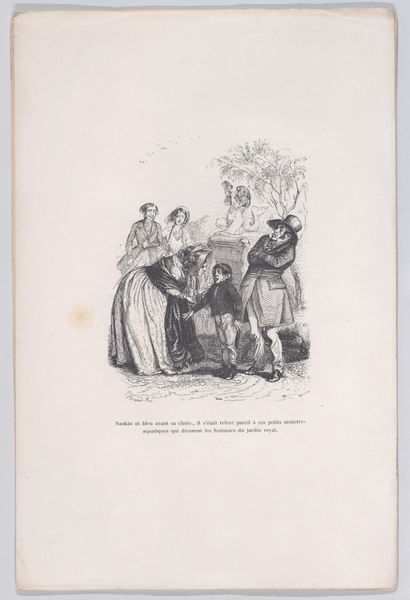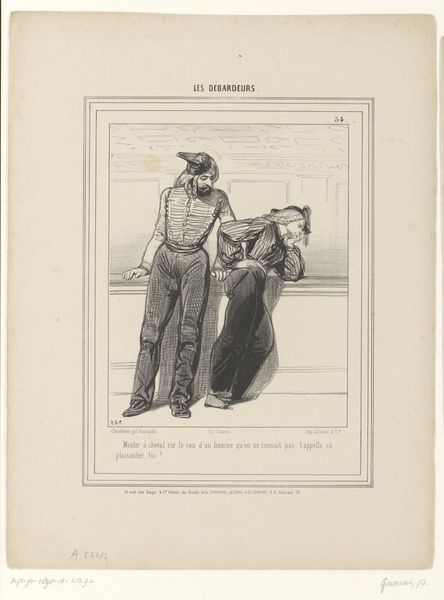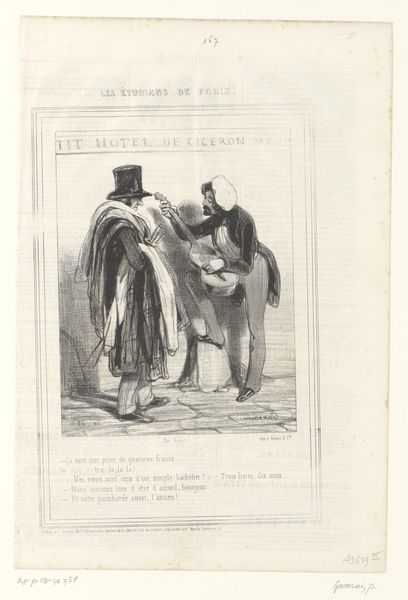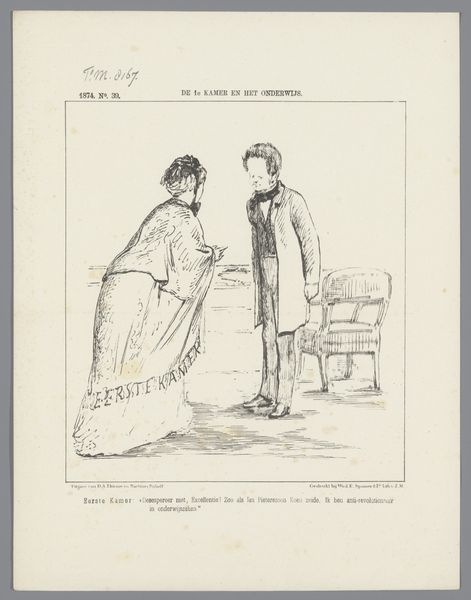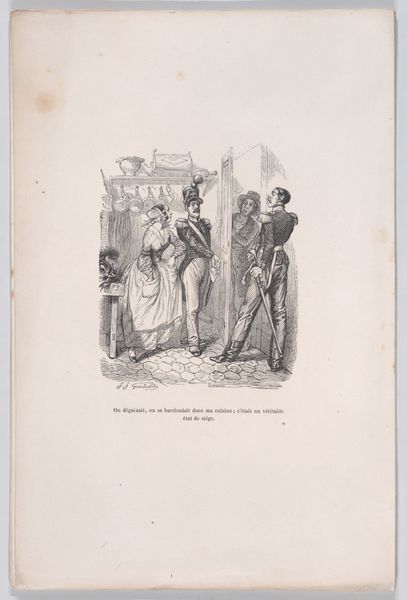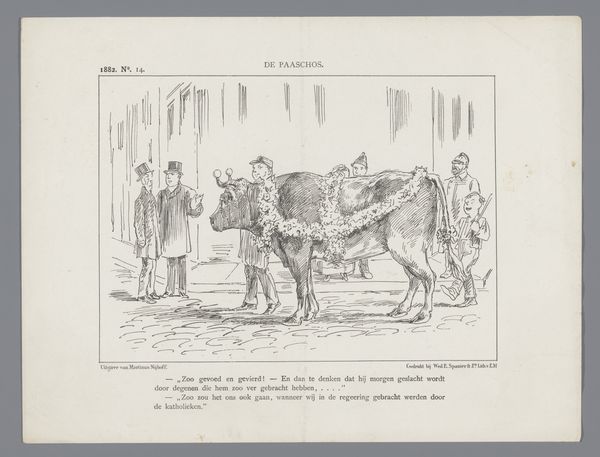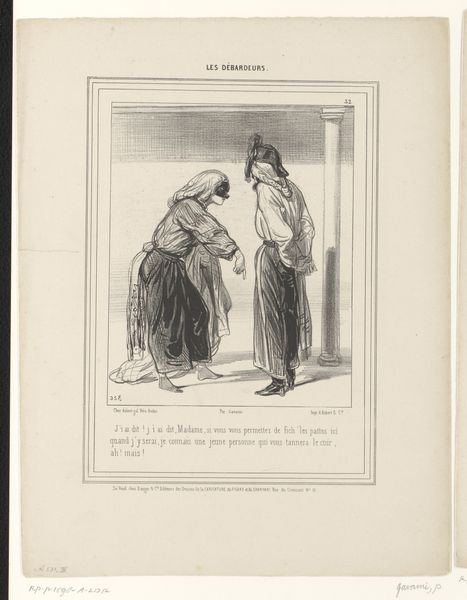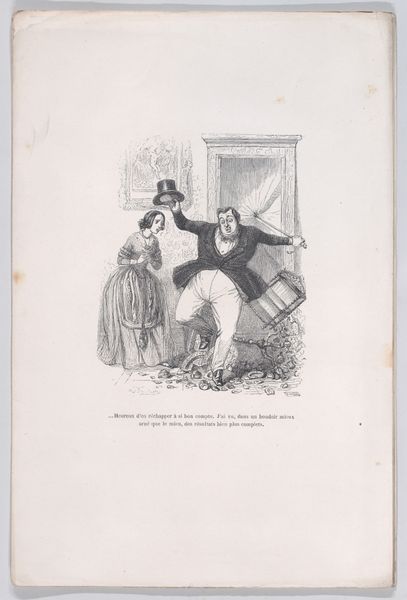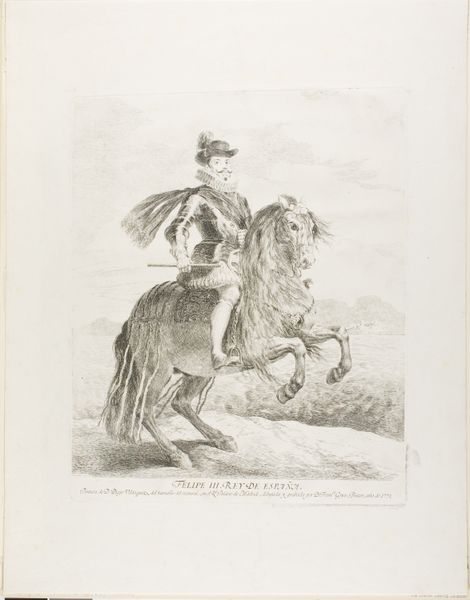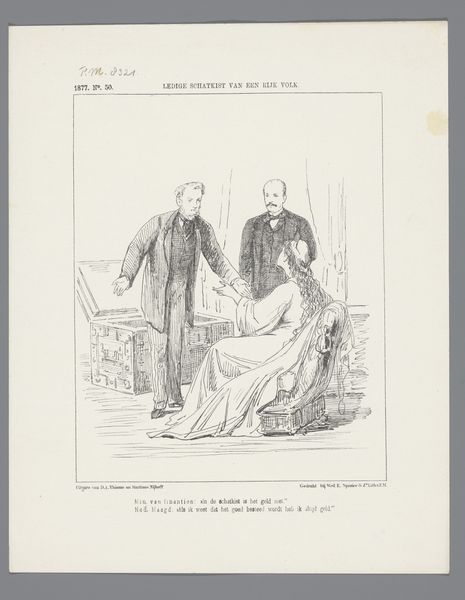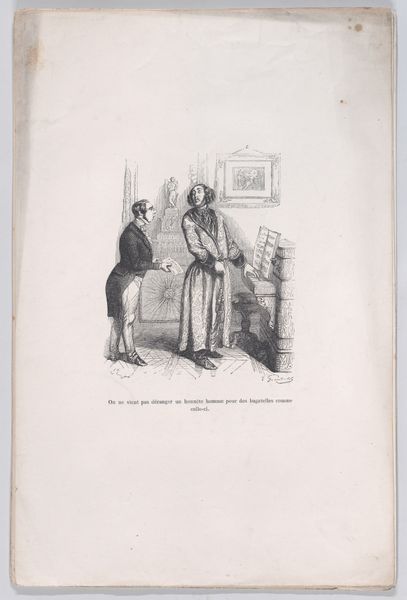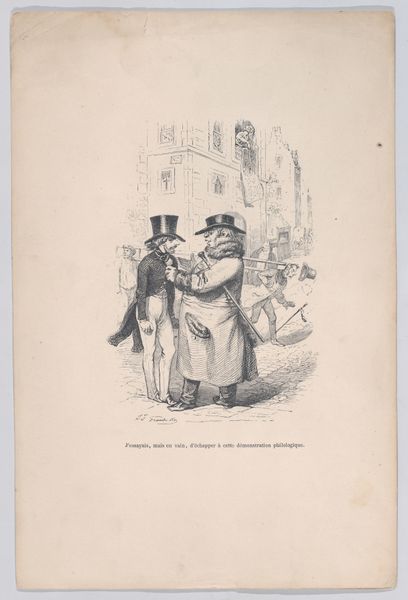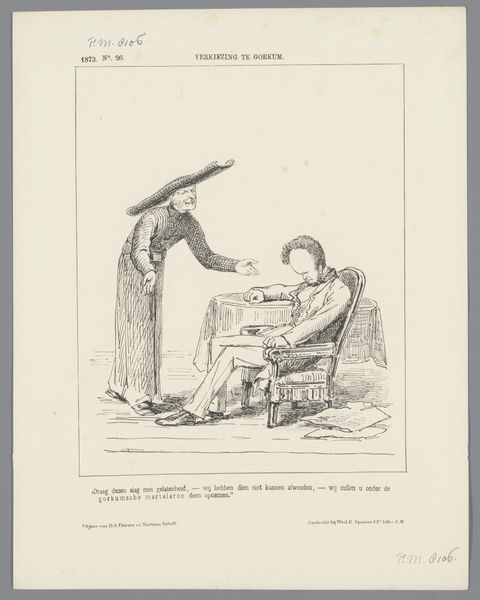
drawing, print, paper, ink
#
drawing
#
narrative-art
# print
#
caricature
#
figuration
#
paper
#
ink
#
line
#
genre-painting
Dimensions: height 275 mm, width 215 mm
Copyright: Rijks Museum: Open Domain
Curator: This 1874 print by Johan Michaël Schmidt Crans, titled “Spotprent op de ministeriële krisis,” is a commentary on a political crisis rendered in ink on paper. It employs caricature, a common visual strategy for political discourse at the time. Editor: My immediate reaction is intrigue, but also a sense of disorientation. The scale is quite jarring. A woman and lion are rendered nearly gigantic next to the gesticulating gentleman. The line work has this nervous energy too. What might the figures represent symbolically, in this context of a 'ministerial crisis?' Curator: Well, let’s break it down. Caricatures like this one use established visual tropes. The woman with the lion almost certainly embodies the Netherlands—a Dutch Maiden figure—attempting to navigate the turbulent political landscape, indicated by the word “krisis.” She carries a lantern, suggesting a search for clarity. Editor: Ah, so the lion at her side could signify strength and resilience—key attributes needed during political instability. And the little man seemingly lecturing the Maiden – who is that? His size is definitely commenting on his perceived authority. He is speaking out of turn. Curator: Yes! The diminutive figure is most likely a politician or perhaps even a political party leader. Caricatures love to play with scale and size to emphasize a figure’s importance or, in this case, lack thereof! The print uses figuration quite directly for political critique. The crisis itself can be understood as a narrative painting of the instability within government at the time. It really captures that moment. Editor: This type of image shows how potent symbols can be for reflecting public sentiment, the woman embodies an idealistic image of Dutch fortitude threatened by these blustering political squabbles represented by this small man who postures so grandly. It speaks to the continuous negotiations between power and image, even today. Curator: Absolutely. And this artwork reminds us how prints played a crucial role in shaping and reflecting public discourse in the 19th century. By employing simple visual metaphors like scale, symbols, and narrative imagery the artist made political analysis accessible and compelling to the broader population. Editor: Reflecting on it, I'm struck by how these symbolic shorthands offer a vivid, accessible snapshot of political anxieties of the time and how we still grapple with that in a visual culture overloaded by instant communication and social media.
Comments
No comments
Be the first to comment and join the conversation on the ultimate creative platform.
